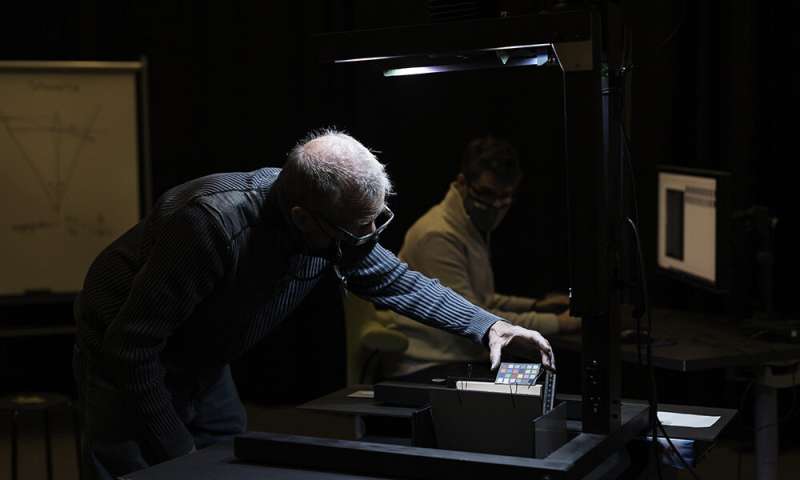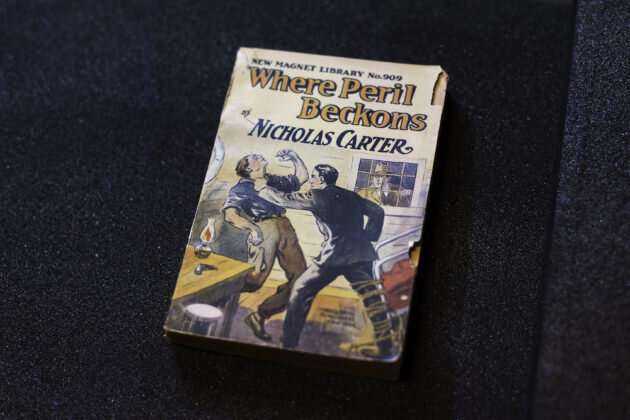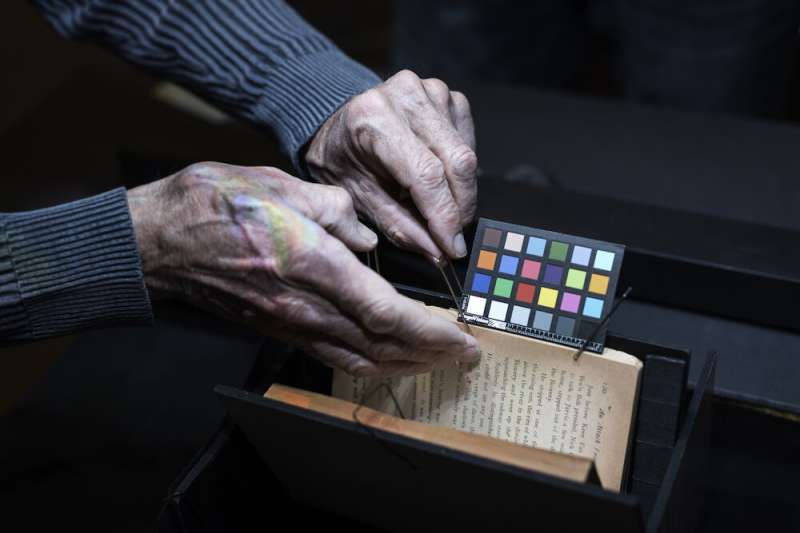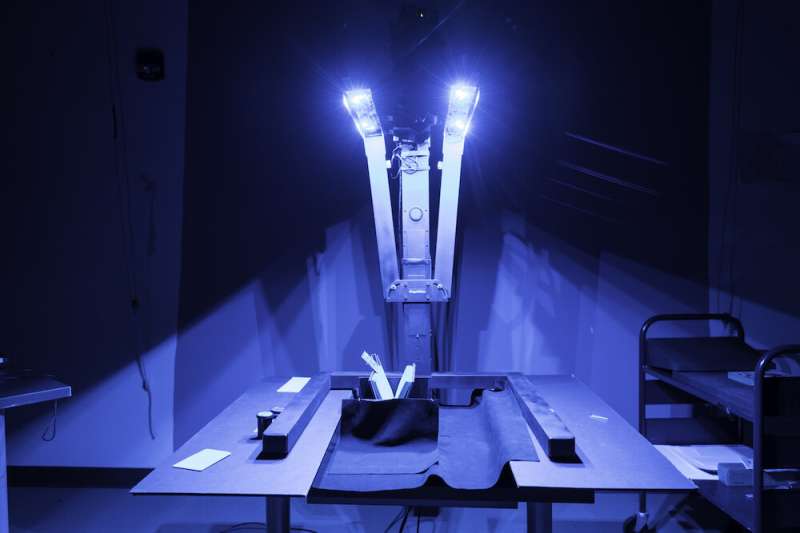New imaging system captures text from barely open books

Rochester textual scientist Gregory Heyworth led the development of a digitization method for books with fragile binding.
“Where Peril Beckons” attempts to grab potential readers with its cover art, featuring a man (whose leg is tied to a bed frame) punching another man (presumably his captor) in the face. The book offers a prime example of one of the 10,000-plus dime novels held by the Department of Rare Books, Special Collections, and Preservation (RBSCP) at the University of Rochester.
Dime novels are a form of middlebrow American literature that emerged in the 1860s. Produced weekly, they offer a large window into what topics were popular among readers, particularly young boys, at the time. The problem is much of RBSCP’s collection is extremely fragile and difficult to use. And this isn’t unique to Rochester.
“It’s rare to have them survive and have so many in one place,” says Autumn Haag, assistant director of RBSCP of Rochester’s collection. “They were printed on the absolute cheapest paper possible.”
The low-quality paper has made the copies that have survived the last hundred-plus years so brittle that to open them would be to pull them apart. That fragility made them perfect test subjects for an unprecedented imaging system.
Led by Rochester’s Gregory Heyworth, associate professor of English and textual science, a team from the Lazarus Project has developed a novel method of producing digital images of manuscripts and similarly rare and fragile books without opening them more than 30 degrees.

Why bother with binding?
“There are entire collections that have never been properly studied simply because the books within them can’t be opened,” says Heyworth. “One could, of course, open them and photograph them and destroy the object. Most libraries aren’t willing to do this.”
Why not? What would prevent a library from taking a manuscript apart and then rebinding it? Several centuries.
Medieval manuscripts are a common acquisition for Anna Siebach-Larsen, director of the Rossell Hope Robbins Library at Rochester. On more than one occasion, she acquired a manuscript bound so tight that it could barely be opened. In these cases, the manuscript was from the Middle Ages, and the binding was from the 20th century, allowing her to send the book to a conservation lab to be rebound. However, if those same manuscripts had medieval or even 16th-century bindings, every effort would have been made to not only keep them intact but also preserve the binding.
“A manuscript is not just its text or pages,” says Siebach-Larsen. “The entire book is a valuable and an important object of study, especially if the binding is original. And this isn’t just for medievalists. There are many scholars who place a similar value on modern books.”
Just as someone might study the Sistine Chapel’s architecture in addition to the frescoes that adorn its ceiling, some researchers would be interested in a manuscript’s physical composition, including the structure and the materials used as well as who made them.

A two-part system for preservation and recovery
A simple point-and-shoot approach won’t produce clear, legible images from a barely open book. That’s why Heyworth called on Lazarus Project team members Ken Boydston, CEO of Megavision, imaging scientist Keith Knox ʼ70, ʼ75 (Ph.D.), and project manager Dale Stewart ʼ70 to help him build an imaging system.
“The problem with photographing an object that can be opened only 30 degrees is that the depth of field is very shallow,” says Heyworth.
“In other words, the top part is in focus, and the bottom isn’t.”
In every day photography, the lens and camera sensor (film plane) are parallel. Flat objects that are photographed in parallel to the lens and the sensor will appear sharp. Take the group out of parallel or photograph an uneven object, and the object will be sharp only where it intersects the plane of focus. This is why a person’s face in a photograph will appear sharp while their ears are blurry.
Bringing a full page of a partially open book into focus required unconventional photography. The lens needed to be at a different angle than the sensor. This is Scheimpflug imaging.

To make the technique work, the team uses a view camera, which has an accordion-like bellows section that can be twisted. (Imagine taking a photo with an S-shaped camera.) The book being photographed is held open by a cradle that protects it from opening beyond 30 degrees. A photo is then taken from above, producing a distorted but focused image of one of the book’s pages. Next, they correct the image’s geometry, making it a rectangle instead of a rhombus, using unique software developed by Knox. When the process is complete, a page can be read as if the book were lying flat.
The second part of the system is multispectral imaging. Yellowed paper or stains can make pages difficult to read regardless of how open the book is. By capturing multiple wavelengths of light, the technique picks up what the human eye cannot while correcting the color.
Revealing “hidden” text is the Lazarus Project’s stock-in-trade. Since 2009, the collection of scholars, scientists, and industry experts have recovered damaged cultural heritage objects, such as manuscripts, but also maps, paintings, and ancient artifacts.
The new imaging system was the result of a year and a half of work aided by a grant from the National Center for Preservation Technology and Training. With the success of their “dress rehearsal,” the team will work to increase efficiency for commercial use.
“I think what’s going to happen is that libraries who adopt this technology will really open up a time period for readers and scholars,” says Heyworth.
At Rochester, dime novels could offer one such gateway for scholars interested in studying the dominant attitudes, beliefs, and values between the late 19th and early 20th centuries.
Citation:
New imaging system captures text from barely open books (2021, October 25)
retrieved 25 October 2021
from https://techxplore.com/news/2021-10-imaging-captures-text.html
This document is subject to copyright. Apart from any fair dealing for the purpose of private study or research, no
part may be reproduced without the written permission. The content is provided for information purposes only.
For all the latest Technology News Click Here
For the latest news and updates, follow us on Google News.
